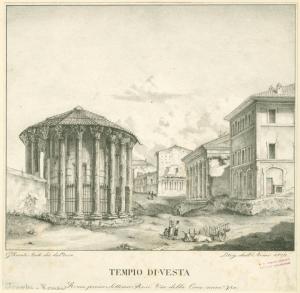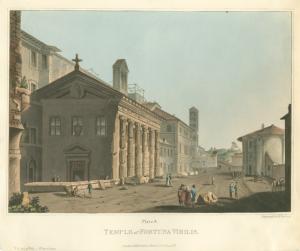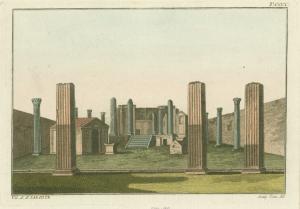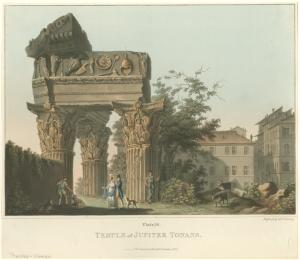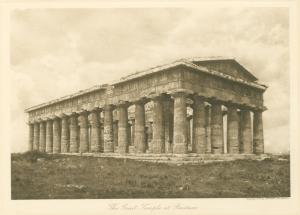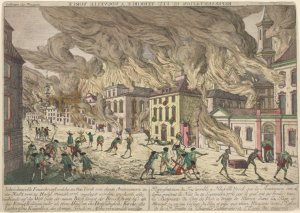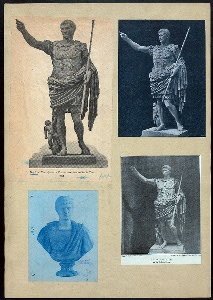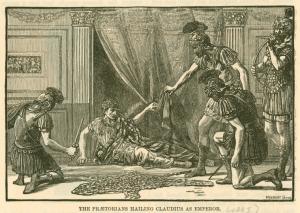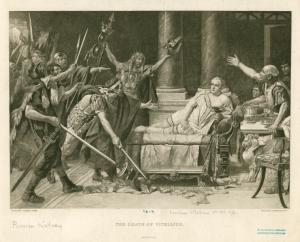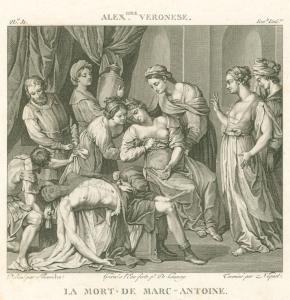Tuesday, February 23, 2010
Ballet: A Graceful Narration (2)
Bailarina en Cuerpo y Alma #1
Bailarina en Cuerpo y Alma #2
Bailarina en Cuerpo y Alma #3
Bailarina en Cuerpo y Alma #4
Bailarina en Cuerpo y Alma #5
Bailarina en Cuerpo y Alma #6
Bailarina, en Cuerpo Y Alma #7
Bailarina, en Cuerpo y Alma #8
To contact: miriammedina@earthlink.net or miriam@thehistorybox.com
.
Ballet: A Graceful Narration (1)
"Today's ballet repertoire offers great variety. New ballets and reconstructions and restagings of older ballets coexist with new works created by modern-dance choreographers for ballet companies. Choreographers experiment with both new and traditional forms and styles, and dancers constantly seek to extend their technical and dramatic range." (1)
The benefits of ballet include improving strength, flexibility, grace, poise, self-esteem and knowledge of an art form and body movement.
Ballet - Achieving Perfection
Ballet: Dancers
Ballet: Spin cycle
Ballet Techniques-Triple Pirouettes
Ballet: A Beautiful Strength
Ballet: Swan Lake
Ballet Dance: Pas de Deux
To continue: Page: 2 Ballet
Footnote: 1) http://www.ccs.neu.edu/home/yiannis/dance/history.html
To contact: miriammedina@earthlink.net or miriam@thehistorybox.com
.
El Circulo Cubano: Alicia Alonso-Prima Ballerina Assoluta
Alicia Alonso is the founder and general director of the National Ballet of Cuba and one of the best dancer of all times (Prima Ballerina Assoluta ... )
"Alonso, who is director and choreographer of the Cuban National Ballet, was born in Havana, where she began studying dance in 1931. She made her professional debut in the United States of America in 1938 after training with Enrico Zanfretta, Alexandra Fedorova and other teachers at the School of American Ballet. "
"As director and leading figure in the Cuban National Ballet, she has been an inspiration and guide to a new generation of Cuban ballerinas who have won a distinguished place in world ballet."
Alicia Alonso`s considerations about Giselle-2
Ballet Carmen
Alicia Alonso Documentary Part I
Alicia Alonso Documentary Part II
Alicia Alonso Prima Ballerina Assoluta
60 years old!! Alicia Alonso Vladimir Vasiliev Giselle Pas de Deux 1980
Alicia Alonso giving a Ballet Class Part I
Alicia Alonso giving a Ballet Class Part II
Alicia Alonso Giselle Final Scene 1963 Ballet Nacional Cuba
Video de Ballet Nacional de Cuba
To contact: miriammedina@earthlink.net or miriam@thehistorybox.com
.
Sunday, February 21, 2010
Brusciano, Italy News/Events (19) : Part 2
 "Mayor Angelo Antonio Romano has sent his best wishes to Bishop Beniamino Depalma for 10 years a bishop to the Diocese of Nola."
"Mayor Angelo Antonio Romano has sent his best wishes to Bishop Beniamino Depalma for 10 years a bishop to the Diocese of Nola."The Bishop of Nola S. Ecc. Archbishop Beniamino Depalma has made October 16 last year a decade of leading the Episcopate Diocese of Nola. Giovinazzo was born in May 15, 1941 he was ordained a priest April 3, 1965; January 26, 1991 was elected to the Archbishopric of Amalfi -Cava de 'Tirreni and December 7, 1990 he was ordained bishop. He was transferred to the Diocese of Nola July 15, 1999. The chair that once belonged to Pauline had preceded him, from 1990 to 1999, Monsignor Umberto Tramma.
The Mayor of Brusciano, Dr. Angelo Antonio Romano, has sent to Mons. Depalma his greetings and best wishes from the Administration and the City Council and that of the whole Bruscianesi community. Here is the text of the letter: His Excellency The Most Reverend Mons. Beniamino Depalma, It is with great pleasure and emotional participation, personally and on behalf of the Administration, City council and the entire community of Brusciano, I extend a salutation and transmit a filial embrace in the occasion of past celebrations for the decade of your episcopate. To His Excellency, Our Shepherd, offer the same gifts with us, the municipal employees, workers in the projects LSU, professionals and employees of this Local Public Administration and the Secretary General, Dr. Marco Caputo. All of us remember, with affection and a renewed commitment to Cristiani, his pastoral visit to Brusciano, what after touching the three parishes, Santa Maria delle Grazie, San Sebastian, Martyr and Saint John the Baptist, it was concluded at our Town Hall, in the House Board on December 20, 2008. We assumed then the "Passing of the Spirit," We, men and women engaged in the responsible role of public administrators, political representatives to serve the nation and its cities, members of the various team party, democratically assigned to the roles of majority and opposition, the commitment to combine the fulfillment of the Common Good and general interest. And what we are doing strengthened the teachings of the Gospel and its constant efforts of the shepherd in conveying the saving announcement. As a community that in its ancient traditions held the Feast of the Gigli, we also want to confirm that to Brusciano, we are committed together with the local Church, in a path of strengthening the values and meaning of faith and we welcome the invitation contained in your consideration: "The Feast of the Gigli is a great opportunity that should be valued at the most, especially in aspects of solidarity and culture". Reaches, then, to you, our gratitude for all you have done in these last ten years of Episcopacy, for the entire Diocese and for Brusciano. Your excellency, I greet you with a goodbye to Brusciano, next December 4th, for the transfer ceremony, in the Church S. Sebastiano Martire della Serva di Dio Nina Lanza.
MUNICIPALITY OF BRUSCIANO
Province of Naples
Press Office : Press Release October 20, 2009
Brusciano, Italy News/Events (19) : Part I
 "Il Sindaco Angelo Antonio Romano ha inviato gli auguri al Vescovo Beniamino Depalma per i 10 anni di Episcopato alla Diocesi di Nola."
"Il Sindaco Angelo Antonio Romano ha inviato gli auguri al Vescovo Beniamino Depalma per i 10 anni di Episcopato alla Diocesi di Nola."Il Vescovo di Nola S. Ecc. Arcivescovo Beniamino Depalma ha compiuto il 16 ottobre scorso un Decennio di Episcopato alla guida della Diocesi di Nola. Nato a Giovinazzo il 15 maggio 1941 venne ordinato presbitero il 3 aprile 1965; il 26 gennaio 1991, fu eletto alla sede arcivescovile di Amalfi - Cava de' Tirreni ed il 7 dicembre 1990 fu ordinato vescovo. Alla Diocesi di Nola venne trasferito il 15 luglio del 1999. Sulla cattedra che fu di San Paolino lo aveva preceduto, dal 1990 al 1999, Mons. Umberto Tramma.
Il Sindaco di Brusciano, dott. Angelo Antonio Romano, ha inviato a Mons. Depalma il suo augurio ed il saluto dell’Amministrazione e del Consiglio comunale e quello di tutta la Comunità bruscianesi. Ecco il testo della lettera: “Eccellenza Reverendissima, Mons. Beniamino Depalma, è con immenso piacere e commossa partecipazione, personale ed a nome della Giunta comunale, del Consiglio comunale e dell’intera Comunità di Brusciano, che Le esprimo il saluto e Le trasmetto l’abbraccio filiale nell’occasione dei trascorsi festeggiamenti per il Decennio del Suo Episcopato. A Sua Eccellenza, Nostro Pastore, porgono gli stessi omaggi, insieme a Noi, i dipendenti comunali, gli addetti ai progetti LSU, i professionisti ed i collaboratori di questa Pubblica Amministrazione Locale ed il Segretario Generale, il dott. Marco Ca
 puto.Tutti Noi ricordiamo, con affetto e rinnovato impegno di cristiani, la Sua Visita Pastorale a Brusciano, che dopo aver toccato le tre parrocchie, Santa Maria delle Grazie, San Sebastiano Martire e San Giovanni Battista, si concludeva presso la Nostra Casa Comunale, in Aula Consiliare il 20 dicembre del 2008.Assumemmo allora il “Passaggio dello Spirito”, Noi, uomini e donne, impegnati nel responsabile ruolo di amministratori pubblici, di rappresentanti politici al servizio della Nazione e della propria Città, di aderenti alle varie compagini partitiche, democraticamente assegnate ai ruoli di Maggioranza e di Opposizione, l’impegno a coniugare il compimento del Bene Comune e dell’Interesse Generale. E ciò stiamo facendo, forti degli insegnamenti del Vangelo e della Sua costante azione di Pastore nel trasmetterci quel salvifico annuncio.Come Comunità che nelle sue antiche tradizioni svolge la Festa dei Gigli, Le vogliamo confermare che anche Noi, a Brusciano, siamo impegnati, insieme alla Chiesa locale, in un percorso di rafforzamento dei valori e dei significati della Fede e accogliamo l’invito racchiuso nella Sua considerazione: “La Festa dei Gigli è una grande occasione che va valorizzata al massimo, soprattutto nei suoi aspetti di solidarietà e di cultura”. Giunga, dunque, a Lei, la Nostra gratitudine per quanto ha fatto, in questi dieci anni di Episcopato, per tutta la Diocesi e per Brusciano.Eccellenza, La saluto con l’arrivederci a Brusciano, il prossimo 4 dicembre, per la cerimonia di traslazione, in Chiesa S. Sebastiano Martire della Serva di Dio Nina Lanza.
puto.Tutti Noi ricordiamo, con affetto e rinnovato impegno di cristiani, la Sua Visita Pastorale a Brusciano, che dopo aver toccato le tre parrocchie, Santa Maria delle Grazie, San Sebastiano Martire e San Giovanni Battista, si concludeva presso la Nostra Casa Comunale, in Aula Consiliare il 20 dicembre del 2008.Assumemmo allora il “Passaggio dello Spirito”, Noi, uomini e donne, impegnati nel responsabile ruolo di amministratori pubblici, di rappresentanti politici al servizio della Nazione e della propria Città, di aderenti alle varie compagini partitiche, democraticamente assegnate ai ruoli di Maggioranza e di Opposizione, l’impegno a coniugare il compimento del Bene Comune e dell’Interesse Generale. E ciò stiamo facendo, forti degli insegnamenti del Vangelo e della Sua costante azione di Pastore nel trasmetterci quel salvifico annuncio.Come Comunità che nelle sue antiche tradizioni svolge la Festa dei Gigli, Le vogliamo confermare che anche Noi, a Brusciano, siamo impegnati, insieme alla Chiesa locale, in un percorso di rafforzamento dei valori e dei significati della Fede e accogliamo l’invito racchiuso nella Sua considerazione: “La Festa dei Gigli è una grande occasione che va valorizzata al massimo, soprattutto nei suoi aspetti di solidarietà e di cultura”. Giunga, dunque, a Lei, la Nostra gratitudine per quanto ha fatto, in questi dieci anni di Episcopato, per tutta la Diocesi e per Brusciano.Eccellenza, La saluto con l’arrivederci a Brusciano, il prossimo 4 dicembre, per la cerimonia di traslazione, in Chiesa S. Sebastiano Martire della Serva di Dio Nina Lanza.COMUNICATO STAMPA del 20 Ottobre 2009
Continue Page: Part 2 for English Translation of same article.
El Circulo Cubano: La Música Cubana Y Sus Artistas (4)
 A Tribute To A Great Cuban Artist Of His Era: Ernesto Lecuona
A Tribute To A Great Cuban Artist Of His Era: Ernesto Lecuona
Famous Composer and Pianist of Cuba
The Music of Ernesto Lecuona played by famous artists
Maestro Frank Fernandez - "La Comparsa" Ernesto Lecuona
Ernesto Lecuona Maria La O
Ernesto Lecuona Siempre en mi Corazon
Cuba: The songs of Ernesto Lecuona
Lecuona-Vals de los Mares-Piano
Aurelio Gabaldón - Siboney - Ernesto Lecuona
To contact: miriammedina@earthlink.net or miriam@thehistorybox.com
.
El Circulo Cubano: La Música Cubana Y Sus Artistas (3)
Donde Estan Los Cantantes #1
Donde Estan Los Cantantes #2
Donde Estan Los Cantantes #3
Donde Estan Los Cantantes #4
Donde Estan Los Cantantes #5
Continue: Page: 4
To Contact: miriammedina@earthlink.net or miriam@thehistorybox.com
.
El Circulo Cubano: La Música Cubana Y Sus Artistas (2)
Orquesta Aragón, Yo Tengo una Muñeca
Classic Cuban Son
Celia Cruz and Tito Puente
Miami Sound Machine (Gloria Estefan) - No Será Fácil
To Continue: La Música Cubana Y Sus Artistas (3)
To Contact: miriammedina@earthlink.net or miriam@thehistorybox.com
.
El Circulo Cubano: La Cuba de Ayer (3)
El Encanto Part: 1 of 3
El Encanto Part 2 of 3
El Encanto Part 3
Cuba, Ayer Te Dije Adios
To contact: miriammedina@earthlink.net or miriam@thehistorybox.com
.
El Circulo Cubano: La Cuba de Ayer (2)
Cuba Que Linda Es
Cuba "Habanera, Tu" "La Bella Cubana" Fernando Aolbuerne
Classic Cars in Cuba
To contact: miriammedina@earthlink.net or miriam@thehistorybox.com
.
El Circulo Cubano: La Cuba de Ayer (1)
CUANDO SALÍ DE CUBA, DEJÉ ENTERRADO MI CORAZÓN.
Recuerdos del Pasado
La Habana de Antes: un esplendido paseo fotografico 1930s-1950s
Nostalgia Habanera
Habanera, Tu Cuban song Fernando Albuerne (Version 2)
Havana, Cuba 1930s
1950s Havana, Cuba
Cuba Before Fidel Castro Part I (Rare footage of Havana, Cuba in the 1950's. Here, captured on film, is the drama, passion, intrigue, and opulence of a legendary city during its heyday-before the Castro dictatorship obliterated it...)
Cuba Before Fidel Castro Part 2
Continue on Page: 2 (La Cuba de Ayer)
To contact: miriammedina@earthlink.net or miriam@thehistorybox.
.
El Circulo Cubano: José Martí (1)
Su Vida y su Obra
Quien Fue Jose Marti
José Martí, un hombre sincero
La Niña de Guatemala - José Martí
La Nina de Guatemala (cantada)
Carlos y Marta "Fragmentos de Poemas de José Martí"
Sergio Endrigo Una rosa bianca
To contact: miriammedina@earthlink.net or miriam@thehistorybox.com
.
Saturday, February 20, 2010
El Circulo Cubano: La Música Cubana Y Sus Artistas (1)
Guantanamera
Yo soy un hombre sincero
De donde crece la palma
Y antes de morirme quiero
Echar mis versos del alma
Guantanamera, guajira Guantanamera
Mi verso es de un verde claro
Y de un carmín encendido
Mi verso es un ciervo herido
Que busca en el monte amparo
Guantanamera, guajira Guantanamera
Cultivo una rosa blanca
En julio como en enero
Para el amigo sincero
Que me da su mano franca
Guantanamera, guajira Guantanamera
Con los pobres de la tierra
Quiero yo mi suerte echar
El arroyo de la sierra
Me complace más que el mar
Guantanamera, guajira Guantanamera
Guantanamera by the Sandpipers
Guantanamera
I am a truthful man
From where the palm tree grows
And before dying I want
To let out the verses of my soul
Guantanamera, guajira Guantanamera
My verse is light green
And it is flaming red
My verse is a wounded stag
Who seeks refuge on the mountain
Guantanamera, guajira Guantanamera
I grow a white rose
In July just as in January
For the honest friend
Who gives me his open hand
Guantanamera, guajira Guantanamera
With the poor people of the earth
I want to cast my lot
The brook of the mountains
Gives me more pleasure than the sea
Guantanamera, guajira Guantanamera
To contact: miriammedina@earthlink.net or miriam@thehistorybox.com
.
Table of Contents (15)
a. Immigration
1. The Great Cuban Exodus by Miriam Medina (1) (2) (3)
b. La Musica Cubana y sus Artistas
1. Joseito Fernandez: Guantanamera (1)
2. Miscellaneous (1) (2) (3) (4) Ernesto Lecuona
C. Cuban Writers
1. Jose Marti (1)
D. Nostalgia for the Past
1. La Cuba de Ayer (1) (2) (3)
E. Ballet Cubana
1. Alicia Alonso: Prima Ballerina (1)
To contact: miriammedina@earthlink.net or miriam@thehistorybox.com
.
El Circulo Cubano: The Cuban Exodus 1959 (3)
The Cuban people in America over the years have made an enormous and outstanding contribution of their talents, knowledge and creative abilities to the American culture, for the benefit of all.
"America's theater and music halls have also been deeply influenced by Cuban-American entertainers. Gloria Estefan, Celia Cruz, Desi Arnaz, and La Lupe have found their way climbing the entertainment ladder to wealth and fame.
"While there are about 64% of all Cuban-Americans that are U.S. Citizens, there are others that are considered reluctant immigrants, compelled to leave their country but with the expectation of returning, and consequently with little desire or motivation to assimilate into the mainstream society." (1)
For an excellent article on the history of the Cubans in Miami, Florida please refer to: Cubans in Miami: An Historic Perspective by Francis J. Sicius.
Cuba is currently facing a critical moment in its Post-Batista history. With Castro's impending death, many are wondering what will become of the future of the Cuban people under his rule for the past 48 years. For some, Castro has become a living legend and will be remembered as a hero. He ensured free health care and education to Cuba's citizens. Others, such as the Cuban-Americans, will always refer to him with hatred as a ruthless dictator who has suppressed the minds and souls of his people.
Will Castro's successor create a new and improved Cuba, or will history repeat itself, plunging Cuba into a worst scenario? Public opinion suggests there will be repercussions beyond the shores of Cuba, that anti-castro groups in Southern Florida will attempt to destabilize the situation in Cuba in hopes that its people will rise against the new imposed government. Perhaps Castro's death will trigger another mass exodus to the United States. No one can know for sure what will take place when the "great man" falls. What do you think:?
Works Cited:
1) American Immigrant Cultures; Builders of a Nation by David Levinson and Melvin Ember; Simon and Schuster Macmillan-New York, 1997 Page: 196-198.
2) Memories of Mariel: 20 Years Later
http://www.uscg.mil/reservist/mag2000/apr2000/mariel.htm
(3) New York State Archives “Chronology of Cuban Migration: 1958-1998”
http://www.archives.nysed.gov/projects/legacies/Buffalo/B_Latino/DocIndex/Buf_Lat_DeptStCubanMig.htm
To contact: miriammedina@earthlink.net or miriam@thehistorybox.com
.
El Circulo Cubano: The Cuban Exodus 1959 (2)
On April 17, 1961, the U.S. supported a Cuban-American exile invasion of Cuba at the Bay of Pigs. The invasion failed three days later, and a total of 1,180 soldiers were captured and imprisoned until their release in December, 1962.
In 1965, the Cuban government responding to internal problems or pressures allowed Cubans in the United States to pick up relatives who wanted to leave the country. Some five thousand Cubans left the island for the United States until the boatlifts were brought to a halt and "both countries agreed to an orderly airlift. " Under the leadership of President Johnson, "freedom flights" program begins. These airlifts which were known as "freedom flights" lasted from December 1965 to 1973. The twice-daily flights brought 260,500 persons during those years." (1)
On November 2, 1966 The Cuban Adjustment Act allows 123,000 Cubans to apply for permanent residence in the U.S.
In 1980, between April 15 and October 31, there was again a mass movement of Cubans of approximately 125,000 who were part of the Mariel boatlift, who departed from Cuba's Mariel Harbor to the United States. As a result of again internal pressures due to the economy and tensions within the island, such as the 10,000 Cubans that stormed the Peruvian Embassy grounds seeking asylum from the Communist regime. Castro proclaimed that the Port of Mariel would be opened, and that anyone who wanted to leave Cuba could do so, as long as someone could pick them up. This was great maneuvering on Castro's part being the opportunist that he was, this way he would get rid of the undesirables, who opposed his regime as well as improve the economy. So the exodus for the Cubans with Castro"s agreement was underway.
The negative aspect of this boatlift, was that among this exodus of approximately 125,000 were individuals who had been released from Cuban jails of which some were later discovered to be violent felons and from mental health facilities, also included were the terminally ill. Many of these refugees, arrived in over-crowed boats that friends and relatives in Florida went to Mariel to pick them up, of which some were placed in refugee camps, while the criminals were denied asylum and held in federal prisons to undergo deportation hearings.
This exodus was ended by mutual agreement between the two governments in 1980. A memorandum from President Jimmy Carter was issued "allowing up to 3,500 refugees sanctuary in the U.S. First priority would go to released political prisoners, second to members of families already in the U.S., and third to refugees seeking political asylum." (2) Jimmy Carter was heavily criticized for his handling of the situation.
On Dec 22, 1980 was the initiation of meetings between U.S. and Cuban officials to discuss the repatriation of the Cuban migrants of the Mariel exodus. (3)
Dec 14, 1984 The United States and Cuba conclude a migration pact under which Cuba agrees to accept the return of some Cuban migrants of the Mariel crisis. (3)
On May 20, 1985 Radio Marti begins broadcasts to Cuba. The Cuban government immediately jams the signal. Castro later suspends the 1984 U.S.- Cuban immigration agreement. (3)
In August of 1994 "Following Castro's declaration of an open migration policy, a new boat lift begins when 30,000 refugees set sail from Cuba as economic conditions continue to deteriorate. President Clinton instructs the U.S. Coast Guard to interdict migrants and transport to non-U.S. safe havens (3)
In September of 1994 "The U.S. and Cuba issue a joint communique on measures that ensure that migration between the two countries is safe, legal, and orderly. The U.S. agrees that total legal migration to the U.S. will be a minimum of 20,000 per year." (3)
To be continued: The Cuban Exodus 1959 (3)
To Contact: miriammedina@earthlink.net
.
El Circulo Cubano: The Cuban Exodus 1959 (1)

The Cuban people in America over the years have made an enormous and outstanding contribution of their talents, knowledge and creative abilities to the American culture, for the benefit of all, even being elected to the U.S. Congress, such as Ileana Ros-Lehtinen, Lincoln Diaz-Balart both of Florida and Senator Robert Menendez from New Jersey.
 The Great Cuban Exodus 1959 by Miriam Medina
The Great Cuban Exodus 1959 by Miriam MedinaThe story of the Great Cuban exodus over the years is a familiar one to the American people. As a result of these exoduses, changes were made by the United States government to immigration laws, changes affecting Cubans seeking political asylum in this country.
Starting in 1959 a massive exodus of the Cuban people began to leave the island of Cuba, after the government of Fulgencio Batista was over thrown by Communist ruler Fidel Castro. This rebellion of a surpassingly intended establishment of a Nationalist government turned out resulting in an emerging dictator and a menacing alliance of the Soviet Union. Castro would sign an agreement with Russia that would seal the fate of the Cuba-United States relationship. Castro flaunted his relationship with Russia. Castro at one time in 1959 stated "There could not be a revolution in Cuba, that He could not be the Cuba He wanted, unless He removes all American interests. "
Throughout the island the properties of the wealthy were seized. The American owned industries especially the oil and sugar refineries were targeted for confiscation as Castro's men cried out "Down with Yankee Imperialism", "Patria o Muerte, venceremos" (Victory or death, we will overcome) thus eliminating all presence of American capitalism and monopolies on the island. Other international properties were also seized by Castro, as well as private enterprises that were considered capitalists. Those who openly opposed the Communist regime were either executed or imprisoned. Bullet riddled blood covered bodies of Batista's men and anti-Castro opponents, by the trigger happy guerrilla fighters were seen everywhere in the streets. The people lived in great fear for their lives, not knowing what to expect next.
Among the first wave of Cubans leaving the island, were the best of Cuba, labeled "the Golden Exiles", which included "Doctors, Lawyers, Businessmen, Teachers, Scientists, highly professional individuals, as well as the wealthy. The wealthy were the first who were targeted by the Castro Regime. For the businessmen who had previous business connections with the United States, the transition was easier for them, since they had already established their residency here, but for others it was not. Many of these Cubans, left all their possessions behind, and families to go to the United States wondering if they would ever see them or their beloved Cuba again.
During the years of 1959 to 1962, there was the availability of the means to leave Cuba, until the Cuban missile Crisis in October which eliminated regular commercial air traffic between the United States and Cuba. During this period of time, a total of some 200,000 Cubans left the Island. The Cuban Missile Crisis ended diplomatic relations between the United States and Cuba. Some Cubans still managed to leave the island by small boats or through third countries during 1964 and 1965.
In order to facilitate the Cuban's entry into this country, the United States government granted them refugee status, "allowing them to enter without restrictions imposed on most other nationality groups. This favored treatment continued until shortly after the termination of the 1980 boatlift." (1)
During 1960-1962 was the Operation Peter Pan: This was a program headed by Ramon Grau and Father Brian Walsh, under which 14,000 Cuban children under the age of 16 were airlifted to the US. (3)
To be continued: The Great Cuban Exodus (2)
Friday, February 19, 2010
The Italian Niche: Sculpture (2)
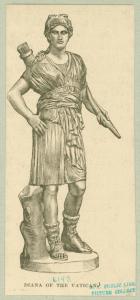
Tiberio. Vaticano, Roma.

Interior of the shop of a cloth merchant (marble bas-relief).
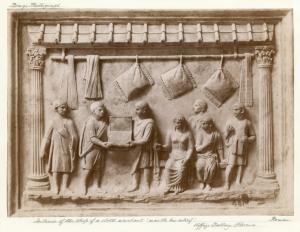
[Interior of Roman fort]
![[Interior of Roman fort] Digital ID: 1619777. New York Public Library [Interior of Roman fort] Digital ID: 1619777. New York Public Library](http://images.nypl.org/index.php?id=1619777&t=r)
Cascata di Caserta.
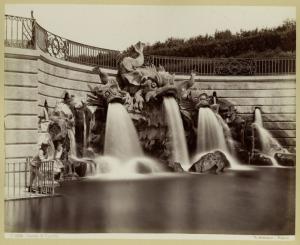
Statua dell' Abbondanza sotto Belvedere in Boboli; Modello di Gio. Bologna, e Scultura di Pietro Tacca: ed altra Statua ...
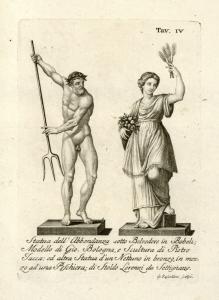
Due Gladiatori, che guardansi in testata alla Sommita dello Stradone all'Isolotto in Boboli; uno dei guali d'antica mano

Femmina, per un Simbolo della Clemenza; di Baccio Bandinelli; ed altra Statua d'incerto Scultore, che puòcredersi un' Cc...
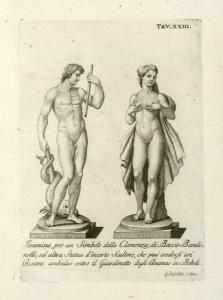
The Italian Niche: Sculpture (1)
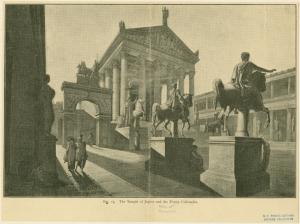
Fragments a Pompei.
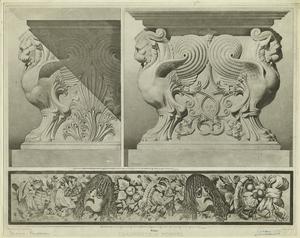
[Boy extracting a thorn. (Rome.); the Apollo Belvedere (Rome.).]
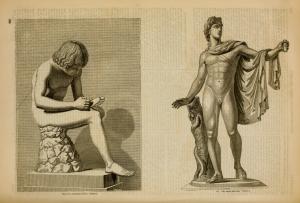
Love triumphant ; Infant Bacchus.
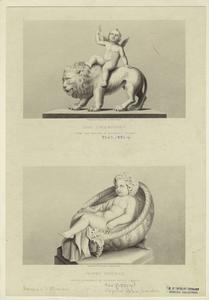
Slave child (Villa Borghese).
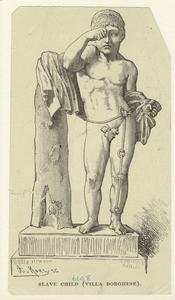
Roma - Museo Vaticano. Antinoo (Scultura antica.)
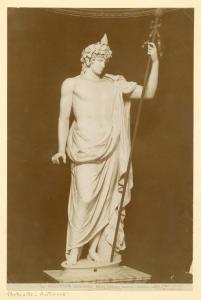
[Dancing maenad]
![[Dancing maenad] Digital ID: 1624042. New York Public Library [Dancing maenad] Digital ID: 1624042. New York Public Library](http://images.nypl.org/index.php?id=1624042&t=r)
[Mithras sacrificing the bull.]
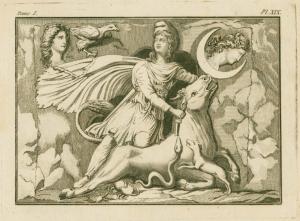
To be continued: Sculpture-Italy (2)
To contact: miriam@thehistorybox.com
.
The Italian Niche: Nobility-Italy (2)
Dame noble de Venise au XVIe siècle (1570).
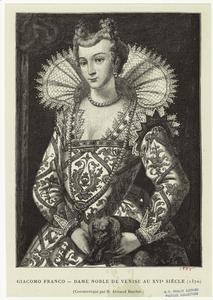
[Nobleman, Italy, 16th century.]

Dame noble de Venise 1540-1550.
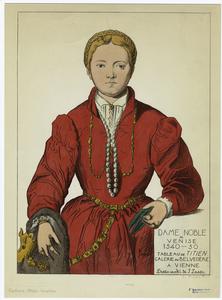
Roman noble woman.
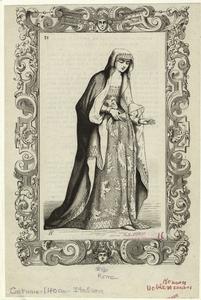
Venedig (Senator und Edelfrau.)
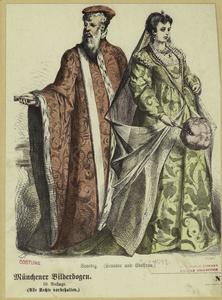
To contact: miriam@thehistorybox.com
.
Thursday, February 18, 2010
The Italian Niche: Nobility-Italy
Seigneurs Italiens. Milieu du XIVe siècle. Fresque d'Andrea Orgagna, au Campo-Santo de Pise. D'ap[rès] l'original par A.... (ca. 1350)

Junger Mann ; Senator von Rom ; Vornehmer Venezianer.
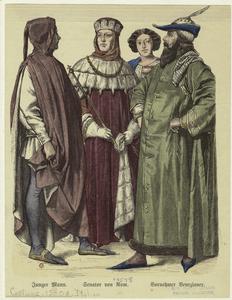
XIV. s. milieu, gentilhomme flamand, noble de Venise, autre personnage d'Italie.
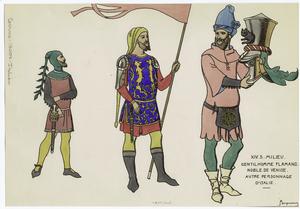
1400-1499 Florence, Italy
Noble de Venise. 1488. Tableau de Carlo Crivelli a Bréra de Milan.
Florentiner Adelige.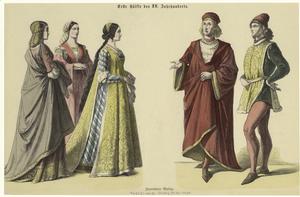
To be continued: Nobility-Italy (2)
.
The Harlem Renaissance and the Flowering of Creativity
The Harlem Renaissance
Harlem Renaissance: Music of the 1920's
Harlem Renaissance Visual Art Presentation
AP US History - The Harlem Renaissance Educational Video Project
Diana Ross-Mahogany
The Italian Niche: Temples of Italy
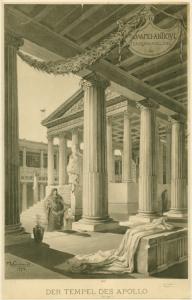
Temple of Fortune at Praeneste (restoration by Canina).
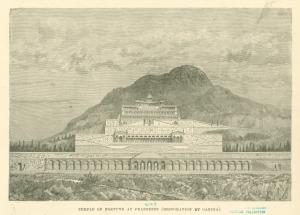
Temple of Cora as restored by Labrouste.
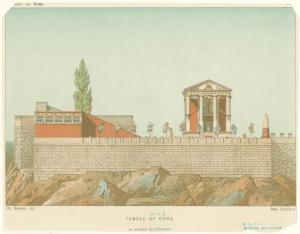
Tempio di Vesta. [[Temple of Hercules Victor]]
Temple of Fortuna Virilis.
Temple of Isis.
De Templo Jovis Capitolini. (1699)
De Marte Ultore et Illius Templo in Foro Augusti. (1699)
Temple of Jupiter Tonans.
Ancient Temples at Agrigentum
The Great Temple at Paestum.
Temple of the sun and moon.
To contact: miriam@thehistorybox.com
Mr. Grim's Account of the Great Fire 1776
It burned all the houses on the East side of Whitehall Slip, and the West side of Broad Street, to Beaver Street. A providential and happy circumstance occurred at this time. The wind was then south-westerly. About two o'clock that morning, the wind veered to the south-east. This carried the flames of the fire to the north-westward, and burned both sides of Beaver street to the east side of Broadway, then crossed Broadway to Beaver lane, and burning all the houses on both sides of Broadway, with some few houses in New street, to Rector street, and to John Harrison, Esq.'s three-story brick house, which house stopped the fire on the east side of Broadway.
From thence it continued burning all the houses in Lumber street, and those in the rear of the houses on the west side of Broadway to St. Paul's Church; then continued burning the houses on both sides of Partition street, and all the houses in the rear (again) of the west side of Broadway to the North River. The fire did not stop until it got into Mortkile street, now Barclay street. The College yard, and the vacant ground in the rear of the same, put an end to this awful and tremendous fire.
Trinity Church being burned, was occasioned by the flakes of fire that fell on the south side of the roof. The southerly wind fanned those flakes of fire in a short time to an amazing blaze, and it soon became out of human power to extinguish the same, the roof of this noble edifice being so steep that no person could go on it.
St. Paul's Church was in the like perilous situation. The roof being flat, with a balustrade on the eaves, a number of the citizens went on the same, and extinguished the flakes of fire as they fell on the roof. Thus, happily, was this beautiful church saved from the destruction of this dreadful fire, which threatened the ruin thereof and that of the whole city.
The Lutheran Church being contiguous to houses adjoining the same fire, it was impossible to save it from destruction. This fire was so furious and violently hot, that no person could go near it, and there were no fire-engines to be had at that time in the city.
The number of houses that were burned and destroyed in this city at that awful conflagration were thus, viz.:-
From Mortkile street to Cortlandt street................167
From Cortlandt street to Beaver street.......... ......175
From Beaver street to the East River...................151
___
Total..............................493
There being very few inhabitants in the city at the time, and many of those were afraid to venture at night in the streets, for fear of being taken up as suspicious persons.
An instance, to my knowledge, occurred. A Mr. White, a decent citizen and house carpenter, rather too violent a loyalist, and latterly had addicted himself to liquor, was, on the night of the fire, hanged on a tavern sign-post, at the corner of Cherry and Roosevelt street. Several of the citizens were sent to the Provost Guard for examination; and some of them remained there two and three days, until they could give satisfactory evidence of their royalty.
Mr. Hugh Gain, in his Universal Register for the year 1787, page 119, says__"New York is about a mile and a half in length, and half a mile broad, containing, before the fires on the 21st of September, 1776, and 3d of August, 1778, about 4,200 houses, and 30,000 inhabitants."
Source of Information: From My collection of books: Manual of the Corporation of the City of New York for 1852 by D.T. Valentine; George P. Putnam, 10 Park Place.
To contact: miriam@thehistorybox.com
.
The Negro Riot of 1712
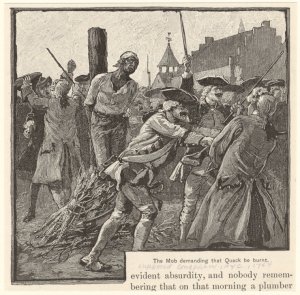
THE FIRST DISTURBANCE of any consequence happened in 1712, when the City hardly extended above Wall-street. About a quarter of the inhabitants were slaves, and a considerable number more were free negroes.
1These people were kept under strict surveillance, and severe punishments were given for slight offenses. But they were badly influenced by the crews of vessels frequenting the port, and always ripe for mischief.
On the 7th of April, 1712, at 1 o'clock in the morning, the house of Peter Van Tilburgh was fired by negroes, and the fire was the signal for a revolt. The White men who hurried to put out the fire were met by a mob of negroes, and several whites were killed. The rest fled and alarmed the fort, a cannon was fired as a signal, and the British troops quickly turned out. The sight of bayonets was too much for the negroes, and they fled to the woods and swamps in the region of the present City Hall Park and Canal street.
Eight or 10 whites were killed, as were many negroes. The number of the latter can only be inferred from the statement of a historian, who incidentally remarks: "During the day 19 more were taken, tried, and executed. Some that turned State's evidence were transported." For the period and the whole number of inhabitants, the riot was a great one, and the loss of life equal to a loss of 5,000 lives today.
2 In 1711 a slave market opened at the eastern end of Wall Street. The Negroes were treated so badly that they became sullen. Tension developed between them and their masters. A Negro woman and an Indian man were burned at the stake in New York City for murdering their master, mistress, and five children. Negroes were not encouraged to embrace Christianity because most whites believed they lacked souls. Marriages between Negroes were performed by mutual consent and did not receive the blessing of the Church.
About 1 A.M. on April 7, 1712, twenty-three Negroes gathered in an orchard in Maiden Lane. They were armed with guns, hatchets, and knives. By launching a dramatic revolt, they hoped to incite other slaves and massacre all the white people in town. They set fire to the house of Peter Van Tilburgh. As the flames reached to the sky, all twenty-three conspirators marched toward the fire. Governor Hunter was awakened and told that the slaves had revolted. He ordered a cannon fired from the fort to alert the townspeople and dispatched soldiers to the disturbed area. The town was filled with rage and fear. Some of the negroes that were caught were tortured and killed. Some were burned alive over a slow fire. A total of 21 Negroes were executed.
Source of Information: 1) New York Times July 29, 1877; 2) The Epic of New York City Edward Robb Ellis, Old Town Books 1966 (excerpt)
To contact: miriam@thehistorybox.com or miriammedina@earthlink.net
.
The Italian Niche: Rome History
Augusteische Onyxgemme in Wien. [[Gemma Augustea]]
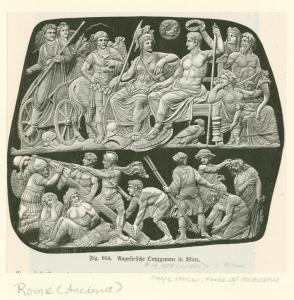
Augustus, Emperor of Rome 63 b.c.-14 a.d.
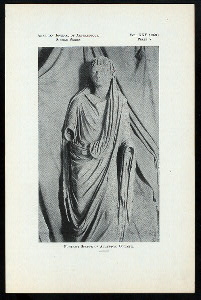
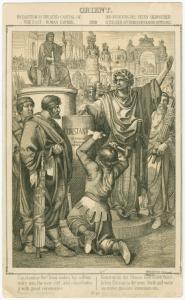
30 b.c.-284 a.d.
The Praetorians hailing Claudius as emperor.
Marc Antony's oration at Cæsar's cremation.
Death of Cæsar - Cæsar, from a Colossal Bust in the Museum at Naples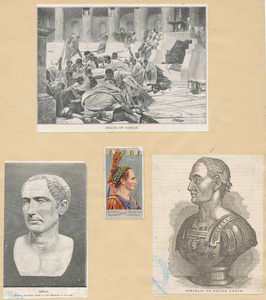
To contact: miriam@thehistorybox.com
.



